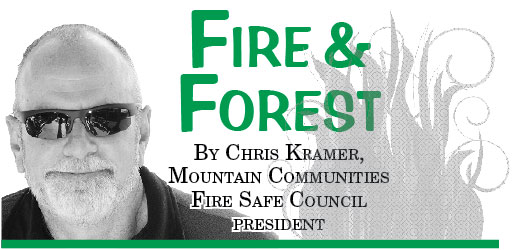Wildfire is getting some prominent and fresh attention in major newspapers. Both the New York Times and the Los Angeles Times have published thoughtful articles this summer examining the larger issues involved. (They are catching up to this newspaper, which has had great reporting on fire for as long as I can remember.)
It seems most people involved in the discussion are accepting that we have a big problem, and that it is likely to get worse as the climate gets warmer and drier. We are challenged as to how to protect lands and communities at a time when “megafires,” which burn more than 100,000 acres with destructive intensity, are becoming a regular part of
the summer in the West.
Most people familiar with the issue start with the view that the long-held policy of attempting to eliminate fire from wildlands was a mistake. The mistake was rooted in the belief that fire was always bad and always a threat to both the forest and human communities. Sadly, vigorous fire suppression led to overgrowth of forests, and to the greater frequency of megafires.
This summer’s premier megafire, not far from us, was the Rim Fire that burned into parts of Yosemite, burning more than 257,000 acres and setting the record as the largest fire ever in the Sierra Nevada.
Our current prevention efforts, ironically, mimic the actions of low-intensity fires once common in the West. Their goal is essentially to clean up the forest floor and thin out the trees. This is done by prescribed burns and mechanical thinning.
Prevention efforts around homes focus on hand removal of the fine fuels that can carry a fire directly to a structure, and thinning shrubs and limbing trees.
A newer and different line of prevention focuses on making the materials of the home itself more fire resistant, especially to the embers that have been shown to be the culprits in most home losses to wildfire.
In our region, we can see at least two very different schools of thought on what to do. Richard Minnich, a fire ecologist at UCR, sees the problem as primarily the overgrowth brought about by fire suppression, and sees the solution in prescribed burns and forest thinning, though he also supports hardening.
Richard Halsey, director of the Chaparral Institute, sees forest thinning fuel treatments as ineffective and sees the solution in the hardening of communities, making them more resistant to inevitable fires. (J.P. Crumrine wrote an excellent piece on their views in this paper on Aug. 20.)
My own views have been shaped a great deal by talking to firefighters who have told me that fuel treatments do positively affect fire behavior. Consequently, I see fuel projects around mountain communities as essential to public safety.
But both Minnich and Halsey are right in calling for more hardening of homes. The Mountain Communities Fire Safe Council saw the first of many roof replacements begun this past week thanks to a FEMA grant, supported by both Cal OES and Riverside County.
This grant helps homeowners replace wood shake and shingle roofs with fire-resistant ones, along with new ember-resistant vents. The new roofs and vents not only make the homeowner safer, they make everyone around them safer. Hardening homes will be a growing activity as fire continues to press communities near wildlands.



